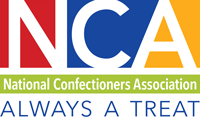The U.S. Food and Drug Administration is responsible for evaluating the safety of food ingredients and additives. As California, New York and about a dozen other states consider pending proposals to ban several FDA-approved food additives, we agree that science-based evaluation of these additives is needed, but usurping FDA’s authority will do nothing but create a state-by-state patchwork of inconsistent state requirements that increase food costs, create confusion around food safety, and erode consumer confidence in our food supply.
Indiana, Maryland, South Dakota, Washington, and West Virginia have rejected similar bills, because the proposals lack scientific basis. In the same vein, Kentucky legislators recently passed a resolution acknowledging that food safety decisions should be based in fact and driven by those with regulatory expertise.
Read more in my Food Dive opinion piece, published on March 25, 2024:
California and New York, among about a dozen other states, have pending proposals to ban several FDA-approved food additives. The glaring issue is that there is no scientific basis for these bans, and no one supporting the bans has the expertise required to make these very technical regulatory determinations.
Compounded by the significant media attention given to this topic, there is no accountability and little to no fact-checking within the legislation and the coverage that has accompanied it.
Support for the proposed bans is implausible. All color additives must be approved by FDA without exception, including Red Dye 3 and titanium dioxide. The FDA also continuously reviews colors and other food additives and proactively addresses consumer concerns. Both Red Dye 3 and titanium dioxide are currently under review and findings are expected to be announced later this year. In the case of Brominated Vegetable Oil, the FDA recently conducted its own studies and has initiated steps to remove BVO from the U.S. food supply. No authoritative body in the world has identified any safety concerns with the use of Red Dye 3 in food, including the FDA, the European Food Safety Authority (EFSA), and the United Nations Food and Agriculture Organization and World Health Organization Joint Expert Committee on Food Additives (JECFA). Although there are broader uses permitted in the U.S., the EU has determined that Red Dye 3 is safe in food.
The EUbanned titanium dioxide in food, but there are no actual safety concerns to justify the ban. FDA deemed titanium dioxide safe in 2021 and JECFA agreed with the findings in October 2023. Europe’s 2021 opinion was based on safety data not representative of the material approved for use as a food color. Since then, highly regarded food agencies from the U.S., U.K., Canada, Australia, New Zealand, and Japan have reviewed Europe’s data and confirmed that titanium dioxide is safe to use in food.
Titanium dioxide is argued to be banned in the U.S. because regulators in the European Union called it unsafe. But how much would a person have to eat to reach the genotoxicity levels used by EU food safety regulators? If you make estimates based on the assumption that titanium dioxide is used at the maximum level permitted by FDA (1% by weight of food), a person would have to eat:
- 318 pizza rolls per day, every day, for 3 years, or
- 246 mini powdered donuts per day, every day, for 3 years, or
- 4,080 pieces (more than 70 bags) of colorful chewy candy per day, every day, for 9 years.
These amounts are not representative of the way that people eat. Yet the rhetoric carelessly deployed in this debate would lead consumers to believe that the food additives in question are harmful and there is a systematic failure on behalf of the U.S. food safety system.




